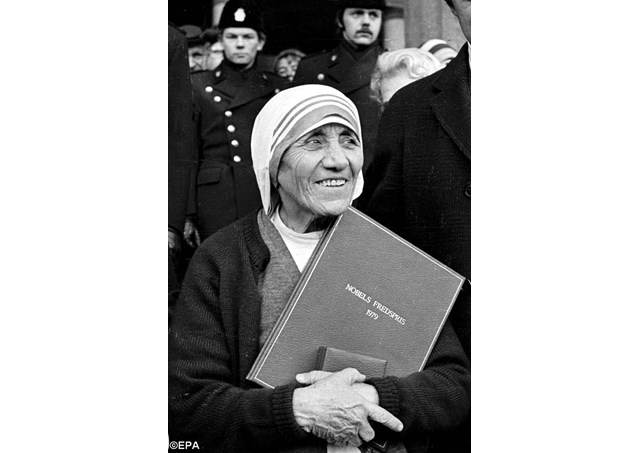
Exploring Mother Teresa's life, from Sister to Saint

Pope Francis has announced that Blessed Mother Teresa, along with three others, will be canonised later in the year, after miracles were recognised for each of them.
Mother Teresa was, in her own lifetime, and still remains, one of the most famous people in the world. But who was she, really? And how did she come to be declared a Saint?
She was born Anjezë Gonxhe Bojaxhiu, on 26/08/1910. Her hometown of Skopje was, at the time, part of the Ottoman Empire, though it is now the capital of the Republic of Macedonia. As a child she was fascinated by stories of missionaries and was soon convinced that she too should give her life to missionary service in the Church.
She initially joined the Sisters of Loreto, taking the religious name “Teresa” and spent almost twenty years in the order, often in teaching positions across Calcutta.
However, her life changed during a train trip in 1946. It was onboard this train from Calcutta to Darjeeling that she felt what she later described as “Call within the call.” She had long been concerned about the terrible poverty in Calcutta and suddenly felt called to serve those poorest of the poor and to live alongside them whilst she ministered to them. To that end, after receiving basic medical training, she opened her first school in 1949. One year later, she received authorisation from the Vatican to found a new religious order, the Missionaries of Charity.
From that small beginning, the Missionaries have grown into an order with over 4,000 sisters managing hospitals, shelters, orphanages and schools across the world.
Mother Teresa was not afraid of putting herself in harms way in order to help those around her. She famously brokered a temporary ceasefire between Israeli troops and Palestinian fighters during the 1982 siege of Beirut. The ceasefire allowed 37 children to be rescued from a hospital which lay across the frontline of the warzone.
She was awarded the 1979 Nobel Peace prize for her work, which she accepted, but asked that a proposed gala dinner be cancelled so that the money might be used instead to help the poor in Calcutta.
Despite all of her works, Mother Teresa herself often struggled in her faith, feeling separated from God and unable to find him in the life. Those involved with promoting her path to sainthood have compared these feelings, which she called the “Darkness,” to the cries of Jesus on the Cross, “My God! My God! Why have you forsaken me?”
After her death in 1997, work began immediately on her cause for Beatification (the normal 5 year waiting period having been dispensed with). Pope John Paul II beatified her in 2002, after recognising a miracle she worked to cure a tumour in a young Indian woman.
Pope Francis will canonise her on October 16th, after recognising her miraculous cure of a Brazilian man with multiple tumours. The man’s parish priest had prayed to Mother Teresa for a cure.
(John Waters)
| All the contents on this site are copyrighted ©. |


